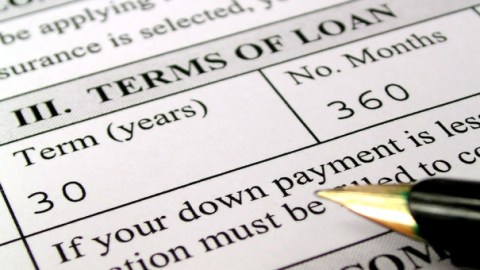Why Are Wall Street Bankers So Testy About Mortgage Forgiveness?

Back in 2007, when I was a loan officer for a small mortgage lender in Atlanta, the president of the Pennsylvania title company that closed the majority of the loans for my employer made a presentation at our office to tout his company’s new capabilities. This was just a couple of months after the subprime mortgage industry started imploding, and mortgage lenders like Accredited Home Lending and New Century went under. After the presentation, the title company president wandered around the room, shaking hands and answering questions.
He and I ended up in a brief discussion about the state of the mortgage business. The title company president had been approached by a friend who was a professional investor with a proposal to clear the titles and execute the closing documents for thousands of loans across the country. This friend, who had connections on Wall Street, had calculated that with the proper funding he could buy millions of dollars worth of subprime mortgage paper that no one wanted to touch for cents on the dollar, dramatically reduce the principal balance owed by each borrower, and shave hundreds of dollars per month from each borrower’s existing mortgage payments, thereby creating a performing portfolio of loans that he could turn around and sell 12 months later for many millions more than he paid for it.
I think about that conversation every time I see the latest report that spotlights how long the mortgage modification process has been taking at mortgage lenders like J.P. Morgan, Wells Fargo, and Chase. One of the major sticking points in any mortgage loan transaction is the value of the property underlying the loan. The professional investor in the anecdote above understood perfectly well how aggressively most subprime properties had been valued. He also understood how important a credible loan to value was to making his whole plan work, which is why he proposed reducing mortgage balances on the subprime loans he planned to purchase by as much as forty to fifty percent. A consistent payment stream was the most valuable thing to him – without it, the mortgages underlying the notes he planned to purchase would be worthless.
I have no idea whether this proposal ever got funded, but what it might have accomplished for both the investors and the borrowers is essentially what the White House wants to achieve with their mortgage forgiveness plan.
Since most banks like J.P. Morgan, Wells Fargo and Chase are not true portfolio lenders, their mortgage modifications rely on a variety of independent actors—servicers, underwriters, valuation experts, investors—to agree on a new set of loan terms and conditions, the same independent actors who barely agreed on the original loan terms and conditions the first time around, all for a lot less money than these banks are used to making when a new loan closes.
I’d like to tell you that I can appreciate President Obama’s zeal at the idea of getting something else accomplished that puts cash money on the table for ordinary citizens all across the United States, a theme of his administration that has repeated itself in everything from Cash For Clunkers to the $20 billion dollar BP settlement, but his gang at the White House has no idea how to sell this as a win for the American public, even though the public is already predisposed to believe that Wall Street bankers are crooks.
I’d like to tell you that I would like to see the White House, in tandem with any mortgage forgiveness plan, push hard for federal jail time for the robosigning abuses and flagrant foreclosure proceeding violations that have been committed by our mega banks and their service providers, but our government can’t ever seem to figure out how to make a case against the nameless faceless executive suite inhabitants who encourage these kinds of activities to happen under their watch, and will only succeed in prosecuting the low level employees who were simply following orders.
The leaders of the mortgage industry are so testy right now about this whole mortgage forgiveness idea, you would think they were all sitting on rock solid balance sheets with gilt edged loan portfolios and overfunded reserve accounts. In reality, they need the same thing the private investor I described above wanted—a consistent payment stream—in order to keep their house of cards from going under. Maybe it’s just the old loan officer sixth sense in me that says the mortgage industry is looking at this the wrong way. Borrowers whose mortgage principal are reduced today are borrowers who will be right back a couple years from now, ready to refinance the same reduced balance loan.





